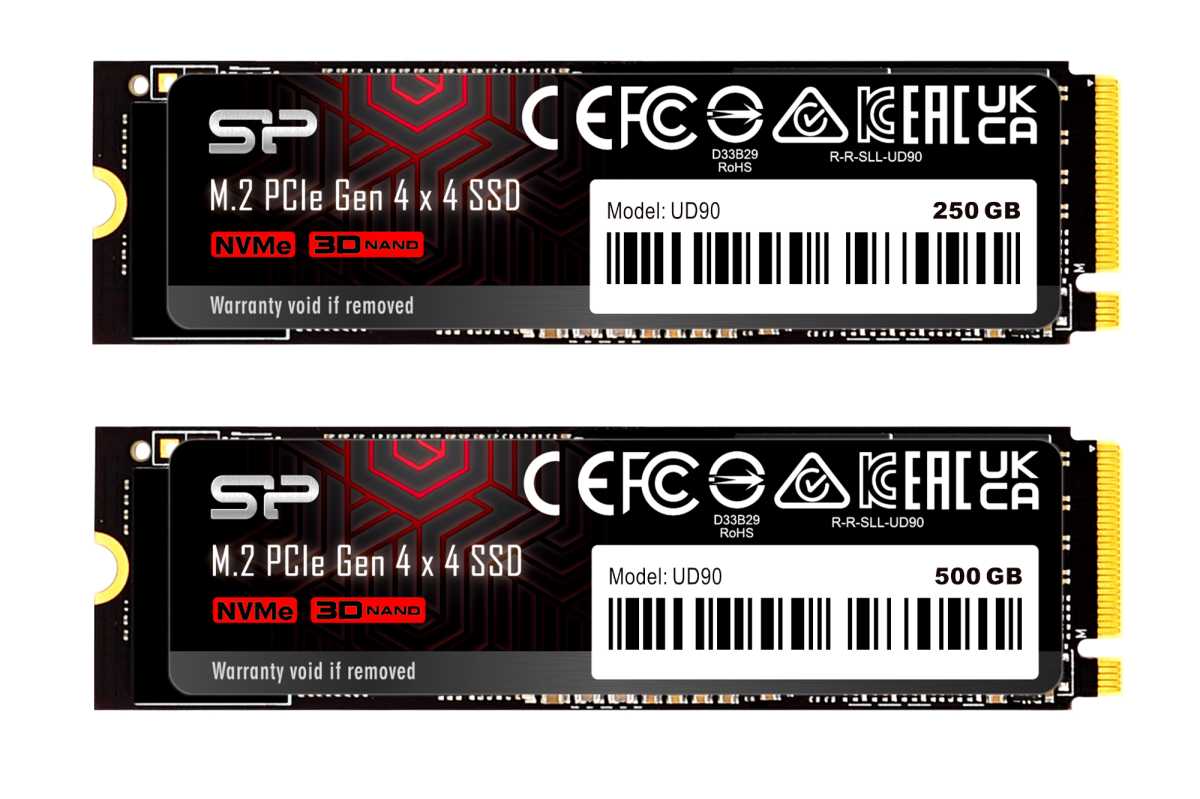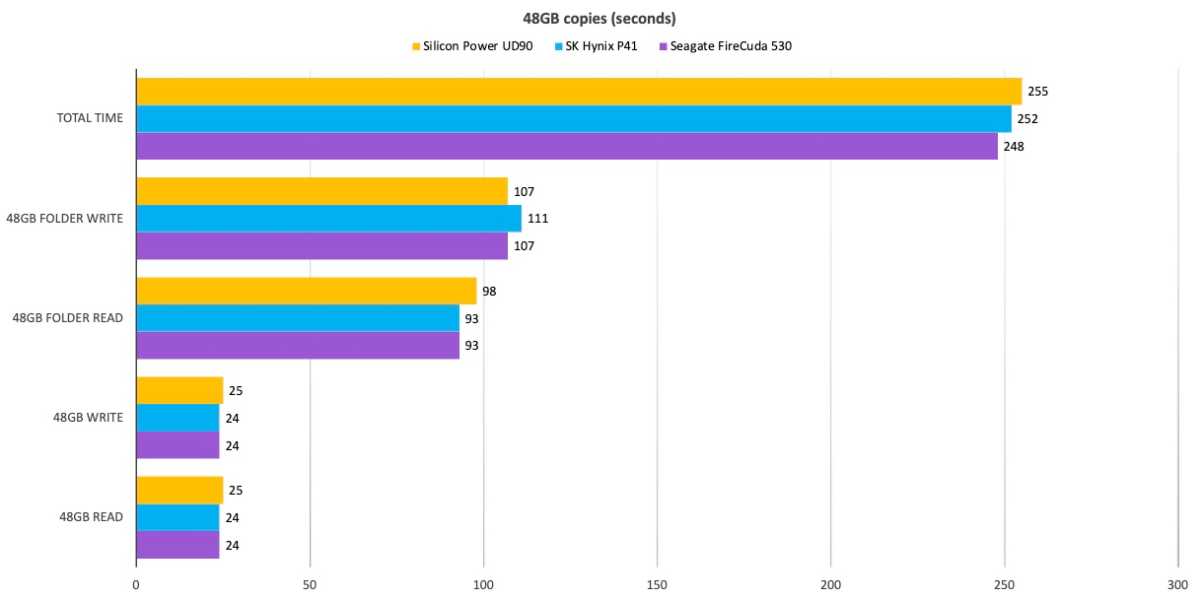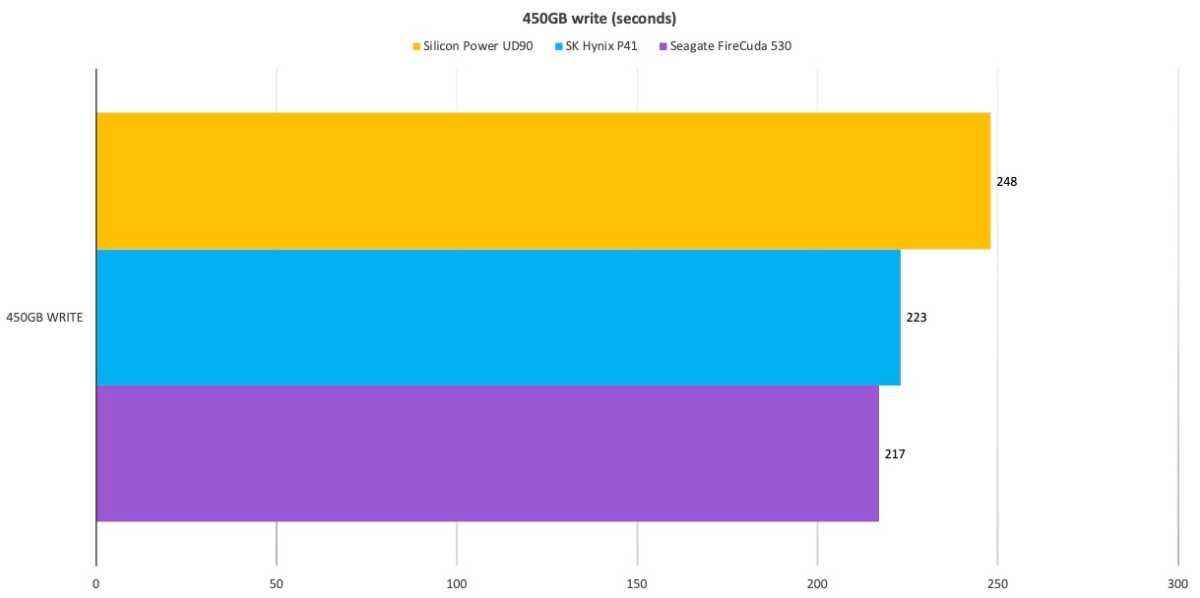[ad_1]
Expert’s Rating
Pros
- Good real-world performance
- Super affordable
Cons
- DRAM-less design is less than optimal for PS5 use
- Mediocre scores on synthetic benchmarks
Our Verdict
Though the UD90’s performance isn’t top-tier, it’s a bump up from PCIe 3 drives and there’s no arguing the price. A real bargain at the moment.
Price When Reviewed
$89.99 for 1TB
Best Prices Today: Silicon Power UD90 NVMe SSD

$89.99
Free
Affordable NVMe SSDs are always welcome to the party, no matter what their performance. Why? Because even slower NVMe drives are… really, really fast. On synthetic benchmarks, Silicon Power’s DRAM-less $90 1TB UD90 appears slow for a PCIe 4 SSD.
But it’s faster than PCIe 3 NVMe drives, a significant step up from SATA, and light years faster than hard drives. Considering the low price and what’s actually very competitive real world performance, it’s currently one of the better bargains on the market.
This review is part of our ongoing roundup of the best SSDs. Go there for information on competing products and how we tested them.
Silicon Power UD90: Price and design
Silicon Power told us that the UD90 would be available in 250GB, 500GB, and 1TB (tested) capacities (as it is in Australia). However, when the drive finally showed up on Amazon in the Americas (two months after we tested it), only the 1TB capacity was available.
At the aforementioned $90, it’s a fantastic bargain, so we can complain only so much. However, Silicon Power is becoming a bit of an in-house legend for sending us on wild goose chases.
All capacities are warrantied for five years, but carry relatively low TBW (terabytes that may be written) ratings of 200TBW (250GB), 300TBW (500GB), and 600TBW (1TB). That’s still a lot of data—more than most users will write in even 10 years. However, as with all SSDs, those TBW ratings are the “limit” in the limited warranty.

The UD90’s form factor is the common 22x80mm (2280) M.2. It’s PCIe 4.0 x4, though its DRAM-less host memory buffer (HMB) architecture uses your system memory for primary caching duties. That means you won’t see top-tier performance in any system, or even the UD90’s optimal performance in devices that don’t support HMB, such as the Sony PlayStation 5.
As usual, secondary caching is writing the 176-layer 3-bit TLC as 1-bit SLC. Writing one bit as opposed to three takes far less time. The Phison E12 controller sported by the UD90 will use as much as one-third of free NAND for this purpose.
Silicon Power UD90: Performance
While the 1TB UD90 was one of the slower PCIe 4 drives we tested, it’s still fast in the grand scheme of things. As you can see below, the UD90 doesn’t even sniff at the top spot in CrystalDiskMark for a PCIe 4 NVMe SSD. It does however, represent a nice improvement over PCIe 3 performance which generally tops out at 3.5GBps.

But synthetic benchmarks perform their own I/O. With file transfers under Windows, which are far slower, the tune changes drastically. The UD90 was only slightly off the pace of the competition with our real-life 48GB data set. Note that the competing Seagate FireCuda 530 is a top-tier drive, and the more affordable SK Hynix P41 is no slouch either.

The UD90 also did well in our 450GB copy, taking only slightly longer than the PCIe 4 norm. Such is not always the case with low-priced SSDs.

However, there wasn’t much room for error. The 1TB drive slowed dramaticallyfrom 150MB/s to 400MB/s at around the 425GB mark when we copied the same 450GB with 100GB already on board.
The drop in transfer rate illustrates what we often warn about—drives slow down as they fill up and run out of cache, and it can be a drastic drop for drives with slower NAND. Buy at least twice as much capacity as you think you’ll need if you want top performance all the time.
While the UD90 isn’t top-shelf in performance, you’ll barely notice the difference from a top-tier drive under most circumstances if you put it in your system.
Internal drive tests currently utilize Windows 11 64-bit running on an MSI MEG X570/AMD Ryzen 3700X combo with four 16GB Kingston 2666MHz DDR4 modules, a Zotac (Nvidia) GT 710 1GB x2 PCIe graphics card, and an Asmedia ASM3242 USB 3.2×2 card. Copy tests utilize an ImDisk RAM disk using 58GB of the 64GB total memory.
Each test is performed on a newly formatted and TRIM’d drive so the results are optimal. Over time, as a drive fills up, performance will decrease due to less NAND for caching and other factors. The performance numbers shown apply only to the drive of the capacity tested. SSD performance can vary by capacity due to more or fewer chips to shotgun reads/writes across and the amount of NAND available for secondary caching.
Note that Silicon Power doesn’t promise that your UD90 will have the same exact components as our test unit. We’re supposing it should perform just as well, or better; however, if you find otherwise, please let us know and we’ll follow up with the company.
Fast enough and super affordable
Given the price, we can recommend the UD90 for PCIe 3 systems with support for HMB, and/or PCIe 4 systems that don’t require bleeding-edge storage speeds. It’ll certainly save you a buck or two, and you’ll likely never notice the minor lags in performance.
[ad_2]
Source link